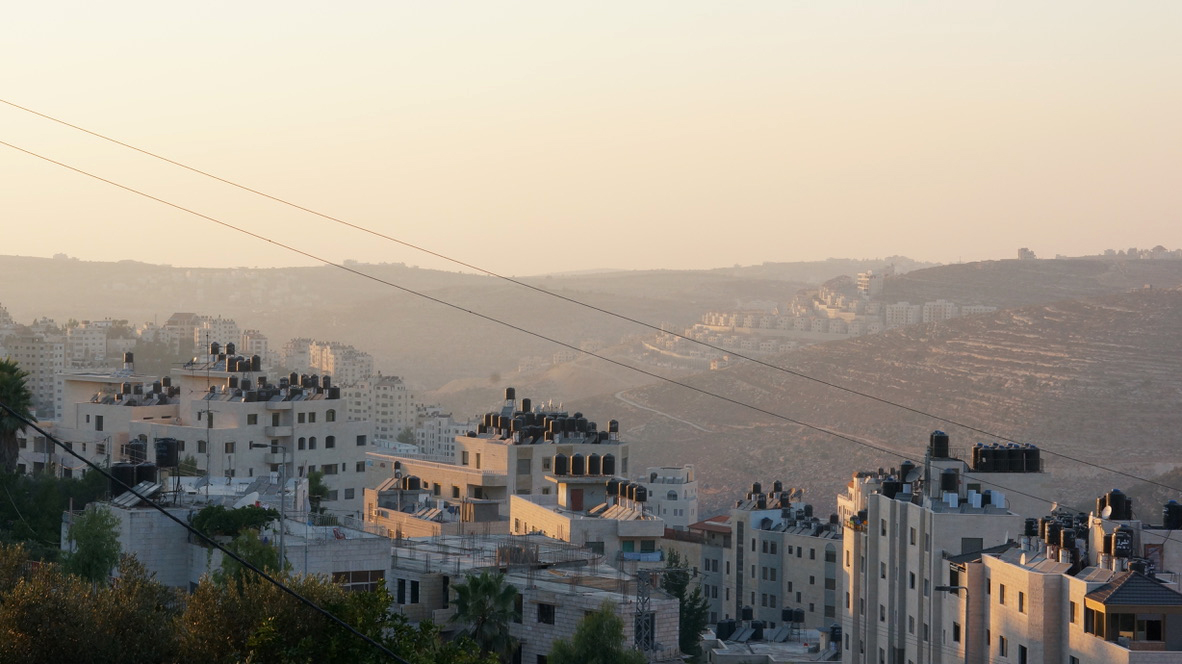(THIS ARTICLE IS MACHINE TRANSLATED by Google from Norwegian)
The Israeli high-tech industry was the first to benefit from the peace process. But the Israeli economy, which had just undergone a process of liberalization and privatization, had already seen significant growth before the peace talks started in Oslo.
Thanks to US investment in civilian and military industry over 30 years, and free trade agreements Israel included with USA and with the EU. For Israel, the Oslo process was a period of prosperity; foreign because they achieved their views through diplomacy, and domestic because they experienced economic growth.
High growth
In 1995, well over a year after the peace agreement in Oslo, Israeli investment abroad rose by 46 percent; a growth rate that lasted for the next three years.
Until it all stopped abruptly three years into Benjamin Netanyahu's reign, and then rose again until in 2000 they accounted for seven per cent BNP. Between 1993 and 1998, exports of high-tech products rose annually by 15 per cent. Thanks to the lifting of both the second and third Arab boycotts in 1994, many doors opened. Multinational corporations that in the seventies and eighties had preferred to work with Arab states, now turned to Israel. Some companies had already done so under pressure from the US Congress, which had voted through a law protecting Israel from the Arab boycott by imposing sanctions on those who participated.
In this way, Israel became one of the twenty richest countries in the world and continued to attract investments from the largest multinational companies (Intel, IBM, Motorola, Vishay, Towers Semiconducters, etc.).
With such investments, Israel could afford to hire highly qualified Russian immigrants who, instead of becoming a burden to Israel, became a competitive advantage. From 1995 to 1999, GDP rose by 50 percent, while population growth was below 10 percent.
In practice, it is the arms trade that has profited from this.
According to the Department of Commerce, Israel has lost about 40 billion in the last forty years due to Arab boycotts. After they ended, everything changed. Since 1994, more than twenty countries have established diplomatic relations with the Hebrew state, and many have come later. New markets have opened up in Southeast Asia, Latin America, the East and elsewhere. In 1994, exports to Asia rose by a third, to India by more than 50 percent, Thailand by almost 70 percent. In 1995, China, which had been boycotting Israel for a long time, opened its doors to the country; China is, as you know, one of the world's largest markets for both civilian and military industries.

Peaceful restructuring
Israel has given new meaning to the term "restructuring" in peace, which previously meant transferring military investment to civilians. In practice, it is the arms trade that has profited from this.
The research and development that was conducted in Israel and funded by the United States became a burden, but after the Oslo agreement it transformed into a sector in full bloom. In the mid-1990s, Israel signed research and development cooperation agreements with Russia, Turkey, Singapore, India, France, Ukraine and South Africa. Cooperation with the latter was particularly fruitful as one party had just left behind apartheid and the other was beginning to embark on its apartheid system. Important trade agreements in defense were signed between the two countries.
Corruption was the sad result of the Oslo process.
Meanwhile, the service industry's share of GDP had increased by 39 percent between 1990 and 1994. Increases in imports and financial aid to foreigners residing in Israel were considered to be positive economic indicators that would stimulate long-term investment, which is good for the economy as a whole. GDP per capita rose from 12 600 dollars in 1992 to 15 600 dollars in 1995, and is thought to be around 20 000 dollars in 2001!
And despite the large proportion of Russian immigrants, unemployment fell from 11,2 percent in 1991 to 6,9 percent in 1995; another positive indicator when considering that Israel simultaneously received more than 300 000 workers from Romania, Thailand and elsewhere.

This rapid economic growth has given rise to a new social class made up of teachers and business people, who have focused much more attention on the international market than the control of occupied territories. Significant new rich in constant contact with their like-minded people in the West, who have been convinced that Israel should get rid of its bad occupier pressure, because it harms business. This group has divided, and each gathered around two directions: The first is Protestant and looks rather towards Europe and the United States, rather than eastwards towards the occupied territories and the Arab world. The second group consists of people who have used Palestinian labor in their small businesses, and who believe it is time to change economic relations with Palestine so that they are stable in the long run – while insisting on the importance of Israel maintaining its dominant score.
The Oslo Agreement
Of the peace process and its promises of stability, it is the latest that has been met with the greatest interest in the occupied territories, and which has made it possible to establish a dependency relationship that has prevented Israel from evacuating the territories.
The economic model implemented in the occupied territories during the peace process was financed by the World Bank and the international community. This model was mainly developed by people in Israeli and American institutions, and on this occasion a number of studies were conducted that looked at various current and future aspects of the economic relationship between Israel and Palestine, and Israel and the Arab world.

The peace process in Oslo contributed to the change with the slogan: Move from Tel-Aviv to Gaza; which led to people leaving Tel-Aviv and settling on the Gaza Strip. There and in the West Bank there was an extensive system of public and secret subcontractors that exploited cheap Palestinian labor without the workers having to cross the green line to work in Israel; a system that helped to satisfy demand in the Israeli market.
The Israeli project assumed that the Palestinian economy was completely dependent on the Israeli one; and led to the disappearance of all independent Palestinian entrepreneurs. In line with the "industrial park" model (not unlike the so-called maquiladores on the US-Mexico border) proposed by the Israeli economist Ezra Sadan, Israel should improve its system of subcontractors by developing industrial zones in areas with poor and underdeveloped peoples – abundant islets in a sea of poverty – because these were a priori more productive and adaptable to the demands of Israeli industry. The project was basically a variant of the South African system with "growth zones".
But for such a system to work in the long run, a competent and legal Palestinian Authority was needed to ensure a smooth transition to the new dependency relationship, thus avoiding a new Intifada that could threaten the economic environment. The PLO considered itself – with enthusiasm – to be the one who could carry out this task to serve the free market and to open the borders between the state of Israel and Palestine!
It must be emphasized that the Palestinians who in the following years revealed the devastating consequences of this economic policy, believed that those responsible for this were the Oslo process and PNA, while supporting Yassir Arafat.
"Peace Economy»
Many Palestinian experts and advisers linked to the Israeli plans. They became a kind of new class that benefited from the peace process, without worrying about whether the process went in a fair and orderly manner. There were thousands of these VIPs who were allowed to travel relatively freely and who lived largely on a "peace economy" and a "peace industry" dominated by Israel and under the leadership of the World Bank and EU.
A large staff of security personnel, officials and their circle of businessmen had good days: their business with the Israelis was to be subcontractors of cheap labor, and to nurture contacts with important foreign financial organizations. A few of them engaged in the productive Palestinian economy; the vast majority were happy to play a mediating role between Israeli industry and Palestinian consumers and labor – poor people for the most part.
This system was consolidated by the Americans and Europeans who supported the "cooperation project" between the Palestinians and the Israelis, while forgetting to support the former's need for a minimum of independence. Organizations such as the American Builders for Peace (led by then-Vice President Al Gore), or the European Commission on Mediterranean Trade, primarily supported Israeli-Palestinian cooperation projects, which increased Palestinian dependence on Israelis. The Palestinians and Israelis who supported this approach were looking for quick profits and did not take into account the long-term consequences of a dependency on the state of Israel.
It was inevitable that corruption would flourish among those who benefited from this "master-slave relationship." The VIPs developed into a kind of "lacquer" that would satisfy both sides: Present the "bosses" offer and meet the demands of the victims; for only in this way could they maintain their function vis-à-vis the superiors.
The conditions in Palestine has deteriorated, and Israel's neck grip on the lackeys has hardened: Corruption was the sad result of the Oslo process.


